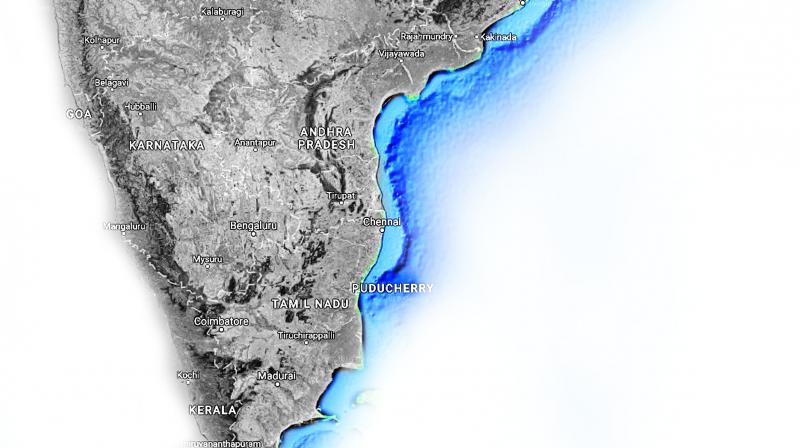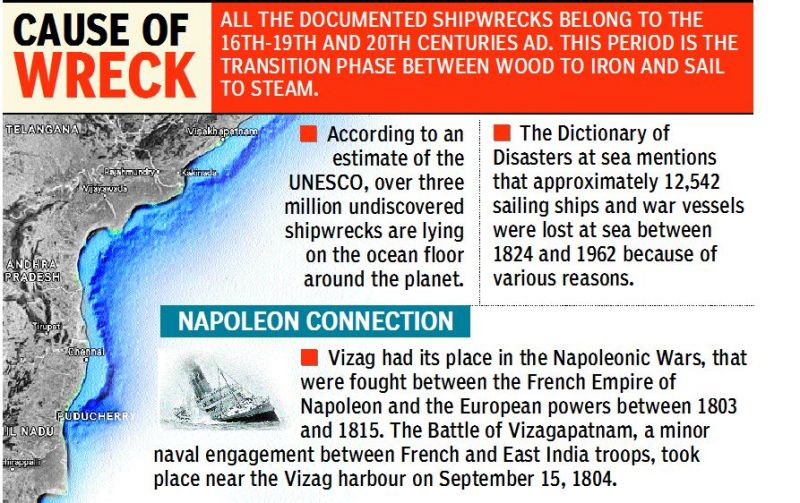Marine archaeologists hint at British era wrecks off AP coast; Some went down with treasure.

Visakhapatnam:
Marine archaeologists believe that the sea off the 920-km AP coastline has the wrecks of ships belonging to Britain and other nations.
Evidence collected from records and archives by marine archaeologist of the National Institute of Oceanography (NIO) suggest that 12 ships sank near Krishnapatnam, Nellore, Coringa ( Kakinada), Masulipatnam (Machilipatnam), Narasapur, Visakhapatnam, Bhimilipatnam, Kalingapatnam, and Sompeta.
These records were collected from Delhi, Kolkata, Bhubaneswar, Panaji, Mumbai, Hyderabad and Chennai. The NIO has salvaged shipwrecks off Goa, Lakshwadeep and Odisha and some places along the west coast.

These ships sank due to cyclones, human error or during wars in the 400 year period from the 16th to the 20th century. Most notable is said to be the Dart Mouth, a British ship carrying treasure that sank off to Masulipatnam (Machilipatnam) in 1719. Marine archaeologist say the coast needs to be explored to unearth the maritime heritage of Andhra Pradesh which once thrived with many ports.
“Explorations have brought to limelight some remains of maritime activities, which are lying in the hinterland and onshore regions. The underwater remains have not been explored so far, including some important shipwrecks,” said noted marine archaeologist Sila Tripati of NIO’s Marine Archaeology Centre
The only inscriptional evidence referring to shipwrecks in the country is the Motupalli pillar inscription ‘Abhaya Sasana’ (charter of security) of King Ganapatideva (1244-45 AD) and Annapottu Reddi (1358 AD) of Andhra Pradesh.
Mr Tripati said that as the cargo of wrecked ships was taken away by local chiefs, the king in the inscription had assured the safety of the lives and cargo of both foreign and inland traders and offered them protection from piracy.
The inscription states that the lives of both foreign and Indian mariners were to be treated as that of King Ganapatideva himself. It also provides a long list of import and export items which point to the fact that it was a busy port.
source: http://www.deccanchronicle.com / Deccan Chronicle / Home> Nation> In other news / by SNV Sudhir, Deccan Chronicle / December 16th, 2016